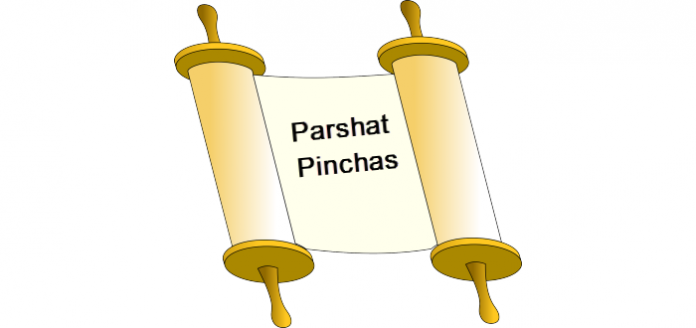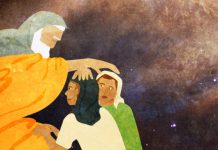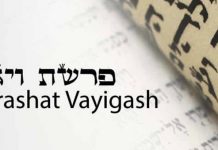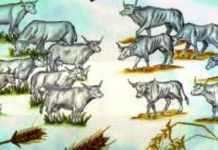Jewish Lineage and the Public Debacle
His shoulder-length ponytail, dangling at his neck, attracted the stares of many an eye. Howie looked around the yeshiva. A member of a “Zen Buddhist” cult in San Francisco, Howie came to Israel on vacation and was doing the “Kibbutz experience” up north.
Howie approached one of the American yeshiva students and offered his hand. “Hi! My name is Howie Holtzman. Rabbi Jacobson suggested that I visit this Yeshiva.”
Motti, a yeshiva student from Brooklyn, couldn’t believe his ears. “Are you possibly related to Nosson Holtzman whose name appears on most of the books in the Yeshiva’s library?” he asked.
“As a matter of fact,” replied Howie, “he was my great grandfather!”
Howie had followed his Zaydie’s instructions and looked up Rabbi Jacobson on one of his trips out of the Kibbutz. Rabbi Jacobson, of a small town in central Israel, was delighted to meet a descendent of the town’s greatest benefactor in the years following the creation of the State of Israel. Nosson Holtzman, born in Lithuania, had immigrated as a child with his parents to New York at the turn of the century. Brought up proud of his Jewishness, yet he was unable to keep his children strong in religious observance.
He had moved to Israel in his later years to share the exciting rebirth of the Jewish nation. He settled in the small town quite by accident, and when a Yeshiva was established there, he gave it his full support. Although not rich, he had saved money over the years, and eventually he donated a building and half of the books the Yeshiva owned.
Rabbi Jacobson had thought it would be a good idea for Howie to see what his great grandfather, long deceased, had invested in. He had no idea what effect it would have on Howie.
Motti invited Howie to lunch. The American students made Howie feel important by telling him: “Although we never met your great grandfather, we heard a lot of stories about him, and we encounter his name every time we open a book. You should be very proud of his accomplishments!”
After lunch they introduced Howie to the dean of the Yeshiva who had known his great grandfather. The following week, Howie returned for another visit, which eventually led to his own return to Jewish observance.
Noticing that the ponytail was gone, the boys at Motti’s table were concerned. “He’s going too fast” said Avi. “The best way to get into Torah is slowly.”
Replied Motti: “Yes, getting into Torah should be a slow process. But as for getting out of Zen Buddhism – the faster the better!”
One rabbi in the Yeshiva later recalled how the great sage, the Chazon Ish, gave Mr. Holtzman a blessing that the Torah would not be lost from his descendants forever!
Our parsha also discusses the benefits of great lineage – both in a positive and negative way. Lineage can be compared to a row of zeros. If you add a “one” at the beginning, meaning you are important on your own, the fact that you also have great lineage can increase your power. But if someone is a zero on his own, then all the zeros following don’t help!
PINCHAS THE ZEALOT: THE INSIDE STORY
The Israelites reached the lush plains of Moab: a beautiful oasis compared to the humid desert they had been wandering in for 40 years. They took a little rest and were feeling good. The Moabites (descendents of Lot, the nephew of Abraham) and the wicked Midianites took advantage of this situation and realized that their guard would be down. So they began to implement the plan of the wicked prophet Bilaam (Numbers 31:16) to entice the Jews to sin. Said Bilaam: “Their God is a moral God. If you can get the Jews to be immoral, then God will dispose of them Himself.”
Our parsha recounts the Moabite process of making the Jews stumble:
(1) The Moabites sent their choicest beauties, led by a Midianite princess, to seduce the Jewish men into sin. They set up tents at the edge of the camp and sold precious linen garments that the Jews were accustomed to from Egypt. Outside the tents, old ladies sold them at expensive prices, while inside the tents were the choice beauties, “dressed to kill,” and selling the same merchandise at bargain prices.
Point of Information: There are two ways of violating the Torah prohibition against idol worship: A) By performing in front of an idol any of the acts normally done in the Holy Temple – e.g. animal sacrifices, libations, incense, or bowing down. B) By doing any act which is the normal way that idol is worshiped – even if it’s a crazy or disgusting act. For example, Markulus was worshiped by stoning it with rocks. Baal Peor was worshiped by defecating in front if it! This ideology glorified the ideas of “back to nature,” “have no shame,” and fatalism. (“Tomorrow we die anyway!”)
(2) The beautiful women first offered the Jewish men a free glass of wine (prior to the rabbinical decree against non-kosher wine), and when the men were a little tipsy, the women offered them their bodies on the condition that they defecate before their Baal Peor idol. Which the Jewish men did!
Point of Information: The Jewish men didn’t realize that this constituted idolatry. They thought they would just humor these beauties by playing along with their silly idol, and that in the end they would show them the beauty of Torah and convert and marry them. (Rabbi Avigdor Miller)
(3) When many of the men gave in to temptation, the idolatry started to spread among the Jews. Then God’s attribute of justice came into play against the entire nation.
Point of Information: There are no police squads in the Torah system to catch lawbreakers. If two adult males witness a crime, they have an obligation to give a warning to the lawbreaker and to demand that he be brought to justice. When these “citizens’ police” don’t fulfill their obligation, God gets angry at the entire nation.
(4) The courts started to hang up (after being put to death) some of the wrongdoers, mostly from the tribe of Shimon. However, the plague of death had already begun.
(5) At this point, the tribe of Shimon was losing men, so they ran to Zimri, their prince, who felt he must make a stand. The Midianite princess was brought to Zimri (according to the Midrash, after trying unsuccessfully to seduce Moses) and Zimri presented her to Moses. Zimri asked: “Is she permitted? And if not, then why was Tzipporah (also a Midianite) permitted to become your wife?!”
(6) Zimri then brazenly took the princess into the tent in front of the entire nation. It was a public desecration of God’s name.
Point of Information: Although having relations publicly with a non-Jew is not a capital offense, in a moral sense, it is considered treason against the Jewish people. There was a tradition from Sinai that someone who witnesses such an act, and is zealous in the honor of God and the Jewish people, would be allowed to put him to death on the spot.
(7) Pinchas was the grandson of Aaron. But he was not a Kohen because Aaron, his sons and their future progeny were sanctified at a particular point in biblical history. But at that time, Pinchas was excluded because he was a grandson (not a “son”) and was born before the Kohanic assignment took effect (thus he was not “born to a Kohen”).
Pinchas was very perturbed to see Zimri’s public debacle, and he asked Moses: “Have you not taught us this law? To which Moses replied, “The one who read the letter shall be the one to fulfill its orders.”
(8) Pinchas separated the blade of his spear from its shaft and hid it under his cloak. Holding the shaft as a walking stick he banged on the tent door demanding his turn as well! Upon entering, he quickly reassembled his spear and impaled Zimri and the Midianite princess at their point of connection. He then proceeded to raise them up in the air on his spear, and displayed them to the people outside of the tent.
(9) This zealous act of Pinchas stopped the plague, which had already claimed the lives of 24,000 Jews.
COVENANT OF PEACE
(10) The people were upset that Pinchas killed a Prince in Israel (who obviously could justify his actions). They poked fun at the lineage of Pinchas, who descended from Joseph and Jethro as well as Aaron. They said this act must be the result of his lineage from Jethro, who worshiped all forms of idolatry.
Zealotry is only permitted when it is performed without any ulterior motives. But some people claimed that Pinchas was biased, due to the fact that his mother’s lineage was from Midian.
God proclaimed that on the contrary, this act was a result of Pinchas’ lineage from Aaron, who loved peace and pursued peace. It was without ulterior motives. Sometimes one must fight and kill for peace. (Not like Neville Chamberlain who appeased Hitler and proclaimed “Peace in our time” – right before the outbreak of World War II.)
God gave Pinchas the “covenant of peace” and installed him and his descendants into the priesthood forever. At this point Pinchas became a Kohen, and eventually the high priest.
(11) According to tradition Pinchas lived for many years, and is identified with Elijah the Prophet who prophesied in the time of the Jewish kings, and went up to heaven in a chariot. Elijah will announce the coming of the Moshiach, who will bring peace to the world forever!
THE SECOND CENSUS
After this plague, a second census was taken. (The first census was at the beginning of the 40 years, and this one was at the end.) When a shepherd returns to his flock, he counts them again, so before the demise of Moses a second census was in order.
Every family is mentioned with a letter “heh” in the beginning and “yud” at the end. These are the letters of God’s name, testifying that they are their father’s children and not of the Egyptians who slandered them claiming that they were the fathers. The letter “heh” (symbolizing women) comes before the “yud” (symbolizing men), to demonstrate that only in the merit of the righteous women did the Jews leave Egypt.
INHERITANCE OF THE LAND
An unusual method was used to decide the inheritance of the Land of Israel. First the Torah says to divide the land according to the size of each tribe (Numbers 26:54), and then it says: “By the mouth of the lottery shall the inheritance be divided” (Numbers 26:56).
Question: In drawing lots, the smaller tribe may end up drawing the larger portion or vice versa. How does this jibe with the requirement to divide the land according to the size of each tribe?
Answer: The procedure was as follows: In order to prevent any complaints (“I want my portion over here!”), the land was divided into 12 sections of approximately equal value, but some larger and some smaller in size. The 12 portions were inscribed on 12 lots, with the names of the 12 tribes on 12 other lots. The High Priest would then look at his breastplate and announce that “this tribe gets this portion.” The prince of each tribe would then proceed to pick exactly the lot of his tribe and the aforementioned portion. At the end of each lottery, the lot itself would call out “I’m for this tribe!” (This was a literal fulfillment of the verse, “by the mouth of the lottery”!) Thus the boundaries were established without controversy.
THE DAUGHTERS OF TZLAFCHAD
Our parsha contains a law forgotten by Moses, so that another Jew could have the merit of teaching it to the people. Tzlafchad (according to some, he was the Shabbat desecrator who received the death penalty in Parshat Shlach) had 5 daughters and no sons. The daughters asked Moses, “If girls are considered to be children equal to boys, why can’t we receive our father’s portion in the Land of Israel?”
This was not a demonstration for Women’s Lib. The daughters knew that when there are sons, they get first rights to inherit (and support the daughters from the estate until they marry, unless there is not enough for everyone, in which case the daughters receive and the sons go begging!). They only asked in the case when there are no sons, in order that their father’s inheritance should not be lost, and that they too could receive a portion in the land.
God concurred with the daughters’ request, and from then on the law was established that whenever a man dies without sons, then daughters inherit from their father. (The idea of women owning property was revolutionary and unheard of even in the Western world until fairly recently.)
The Sages contrast the men who wanted to return to Egypt, with these women who greatly desired a portion in the Land of Israel.
ESTEEMED LINEAGE
How does our story about Howie Holtzman relate to the parsha?
The Torah says: “And the daughters of Tzlafchad approached (Moses)” (Numbers 27:1).
The verse then tells us the lineage of the daughters of Tzlafchad until Joseph, and ends up “these are the names of his daughters.” Isn’t this seemingly extra?
Lineage is very important in Judaism, however there are those who are so proud of their forbearers’ accomplishments that they think it gives them a special status in this world and a free ticket to heaven. When they leave this world, they expect to be asked about their great ancestors, but will be very surprised when the ancestors are asked if they recognize their children. When the children do not follow in the ways of their Zaydies, this is not lineage! It is not enough to have great forbearers, you must also follow in their ways.
Not only was Joseph (who loved the Land of Israel and desired to be buried there) the girls’ grandfather, but the Torah tells us “these are the names of his daughters” because they followed in his path! (heard from the Klausenberger Rebbe)
This is the real meaning of lineage, to add a “one” before all the zeros. Be proud of your ancestors and make them proud of you!














